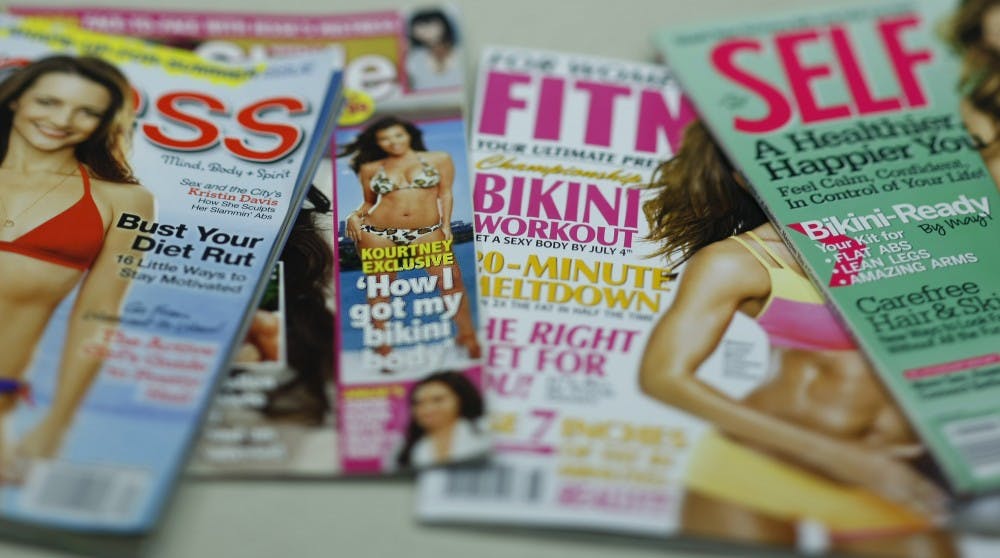While flipping through fashion magazines, I yearned for the long, thin legs that made the clothing look so beautiful and effortless. I used to starve myself for days at a time in hopes of losing weight to look more feminine in my clothes and to resemble these models. This method never worked. I inherited a large set of quads from seven years of competitive soccer, and I will never exceed 5-foot-7 in height.
Different standards of beauty exist, whether based on personal preference or cultural expectations. I began to reflect on this matter when I stumbled across an intriguing blog post on Facebook.
Taking a break from media that popularize glamorous models may actually help women deal with their false perceptions about their body image.
— Shelly Crawford (@Sh3lyCrawford) January 16, 2016
The post featured a photograph of a woman and subsequent photos of the same woman altered according to the standards of various countries around the world. For example, Egypt featured a woman with wider hips while China emphasized a slimmer figure, with no curves. There is no way to confirm that these are accurate depictions of the “ideal woman” in these different cultures, but it brings up some interesting points.
If tastes differ so much from country to country, and from person to person, changing as time elapses, would it not be more proactive to promote an attitude of self-acceptance, especially for qualities that are out of our control?
Another discovery I made on Facebook further illustrates this point, and shows disparities between definitions of female beauty. The Buzzfeed video, Women’s Ideal Body Parts Throughout History, features women who represent the tastes of different time periods spanning all the way back to Ancient Egypt, ending with modern day. The changes are drastic: slim, curvy, small waists, thick waists, dark skin, light skin — and they all have a place in history. Considering the fact that societies are fickle in their tastes, there seems to be little merit in altering one’s body for the sake of societal standards.
Specific to the U.S., the fashion industry predominantly features tall, slender women to model and sell clothes. This gives young women unrealistic expectations.
Don’t get me wrong, I approve of self-improvement, especially when it is for the sake of one’s health or self- confidence, however, many women are not taking healthy routes to reach this standard. Instead of toning their bodies with exercise or wearing makeup that highlights their beauty, they are starving themselves, often developing eating disorders such as bulimia or anorexia.
No concrete data exists as to whether this “thin ideal” directly correlates with cases of eating disorders, but it has been exposed as a contributing cause.
According to Dr. Allegra Broft, who is a psychiatrist at the Eating Disorders Program at Columbia Psychiatry, many patients admit that exposure to this ideal in the modeling industry contributes to their disorders. I know from personal experience that these models, whose bodies complement clothing so well, can be perceived as idols.
Genetically, variation in appearance will occur. Women should embrace this, not shy away from it. Some women’s frames will be smaller or larger, some taller or shorter. There are many things we cannot change and we shouldn’t want to.
There are movements with similar ideas, suggesting that these different traits are even more beautiful than what would otherwise be considered ordinary. For example, Brock Elbank recently released a line of portraits of individuals with freckles, portraying their skin as beautiful and unique. The comment section was full of positive comments commending their unique qualities.
As mindsets change, we come to realize that we all define beauty in our own way. Not everyone will agree that freckles are beautiful, but that is okay: You are beautiful just the way you are.
Body image, though a sensitive issue, is a problem that could be dispelled by eradicating “popular” standards. Instead of promoting a set of standards that leads to extremes such as eating disorders, we should take into account the evolution of standards, differences in tastes between various regions of the world and differences in personal preference.
Related Links:
New Barbie commercial, same unrealistic beauty standards
Reach the columnist at ghirneis@asu.edu or follow @ghirneise2 on Twitter.
Editor’s note: The opinions presented in this column are the author’s and do not imply any endorsement from The State Press or its editors.
Want to join the conversation? Send an email to opiniondesk.statepress@gmail.com. Keep letters under 300 words and be sure to include your university affiliation. Anonymity will not be granted.
Like The State Press on Facebook and follow @statepress on Twitter.




